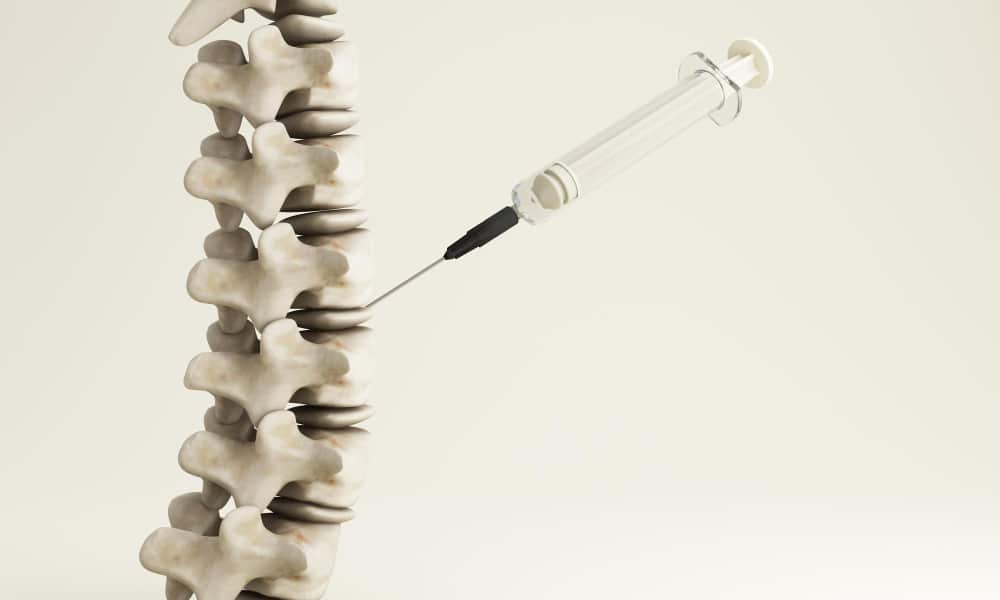Infiltration therapy

What types of syringes / infiltrations can be distinguished?
- Intramuscular (i.m.) infiltration
- Trigger point infiltration
- Neural therapy
- Nerve blocks
- Periradicular Infiltration (PRT)
- Epidural / peridural infiltration
- Joint infiltration (intra-articular i.a.)
- Facet infiltration
- Mesotherapy
Intramuscular (i.m.) infiltration
Here, a drug is injected into the muscle, which is then absorbed into the bloodstream and thus unfolds its effect. Many medications (Voltaren, cortisone …) can also be given in tablet form or as an infusion through a vein.
Alternatively, this technique is also used as part of special procedures to treat local diseases and pain in the muscles.
Trigger point infiltration
Here, the infiltration takes place in muscle areas that are used for the disease and are held responsible for local or radiating pain. The diseased muscle areas are often cramped or even show structural changes (myogelosis).
Neural therapy
Neural therapy goes back to the doctors Ferdinand and Walter Huneke (1925). In neural therapy, a local anesthetic is injected to reduce the patient’s pain. The effect is said to be based on influencing the vegetative nervous system and unfolds its effect also far from the infiltrated region (long-range effect, transmitted pain). Neural therapy distinguishes between:
- Segment therapy: Here, the infiltration takes place in the area of certain zones directly under the skin (wheals) or on nerves (ganglia) of the vegetative nervous system
- Interference field therapy: Huneke assumes that these interference fields can trigger complaints in other areas of the body. Old scars, but also the tonsils or the tooth and jaw region can act as interference fields.
Nerve blocks
Local anesthetics are injected specifically at the nerve roots or nerves that are responsible for the symptoms. Corticoids can also be used for inflammatory causes.
Periradicular Infiltration (PRT)
In periradicular infiltration, a drug is injected precisely onto a nerve root under X-ray control in order to “calm it down”. PRT can also help an inflammatory response to alleviate a herniated disc and make the herniated disc smaller.
Epidural / peridural infiltration
Here, a drug is applied around the spinal cord. These techniques are used by anesthetists for operations, but can also be used for pain management.
Joint infiltration (intra-articular i.a.)
Here, a drug is injected directly into a diseased or painful joint. If necessary, it may be sufficient to apply the drug around the joint (factette joint).
Facet infiltration
This is a targeted infiltration in and around the small vertebral joints (facet joints) which are often responsible for back problems. If this type of infiltration leads to a significant reduction in the symptoms, a further step can beconsidered to denervate (“scler”) the sensitive and pain-causing nerves of the corresponding facet joint.
Mesotherapy
In mesotherapy, drugs (mostly homeopathic) are applied to the middle (meso) layer of the skin. There are similarities here with acupuncture, neural therapy and reflex zone therapy).
